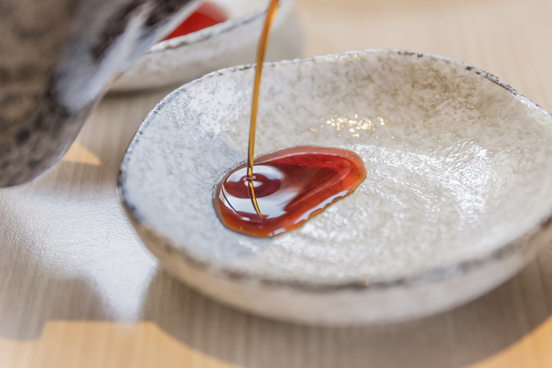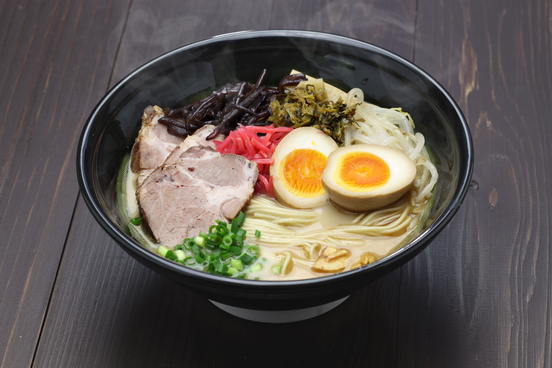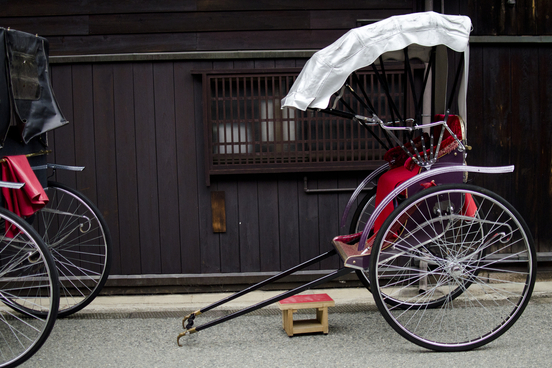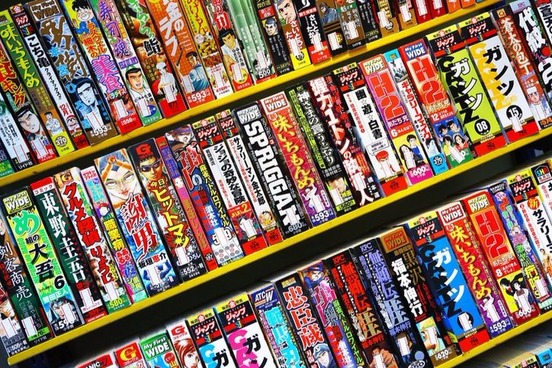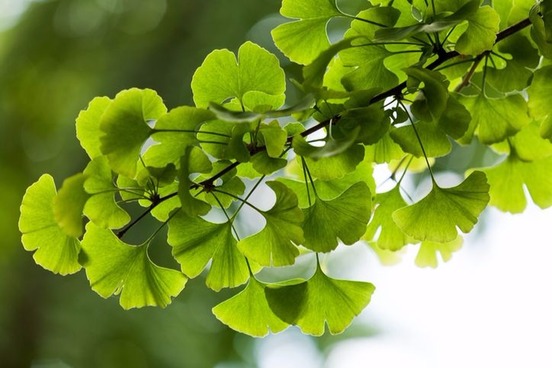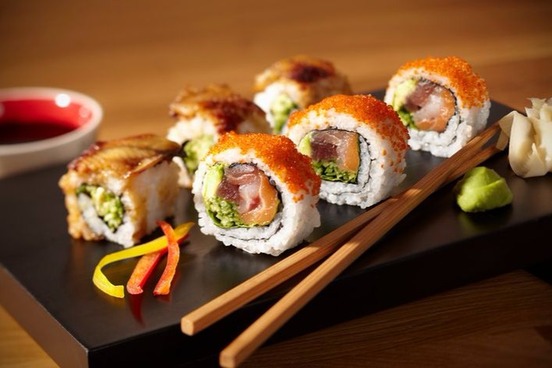Minamoto no Yoritomo, the first shogun of the Kamakura shogunate (1179).
Definition:
1) a top leader (as in politics)
2) a businessperson of exceptional wealth and power : magnate
They become tech tycoons by creating a media platform on which unpaid users do the work, for hours every day, and they sell ads against it.
— Mary McNamara, The Los Angeles Times, 18 Apr. 2022
While tycoon now most often refers to a very wealthy and powerful businessperson, the word has had two other uses in English as well.
When the United States forced Japan to open full commercial and diplomatic relations with the West in 1854, the real ruler of the island nation was the shogun. Officially only a military deputy of the emperor, the shogun—a title shortened from seii-taishōgun, meaning “barbarian-subjugating generalissimo”—stood at the pinnacle of a feudal hierarchy based at Edo (later Tokyo) that effectively controlled the imperial court at Kyoto and ruled the country. Westerners in the initial period of diplomatic relations concluded that the shogun was a sort of secular emperor and the emperor something like the pope. Townsend Harris, the first American consul to Japan, got the idea that the shogun’s correct title was taikun, a Japanese borrowing from Middle Chinese elements equivalent to Beijing Chinese dà “great” and jūn “prince.” This word, in the spelling tycoon, became quite popular in America immediately before and during the Civil War as a colloquialism meaning “top leader” or “potentate.” (John Hay, President Lincoln’s personal secretary—and later Secretary of State to Presidents McKinley and Theodore Roosevelt—referred to Lincoln as «the Tycoon.») After fading from use for several decades tycoon was revived in 1920s journalism with the narrower sense “a businessman of exceptional wealth and power,” a usage that continues to be part of English.
Definition: a person who is in charge of other people : boss, big shot; also : hotshot
Head honcho Simon Cowell was back behind the judging table, having missed much of the 2020 contest after breaking his back in an e-bike crash.
— Michael Hogan, The Telegraph (London, Eng.), 16 Apr. 2022
Honcho dates back—in English—to at least 1945, as World War II was coming to a close. American prisoners learned the word while in captivity in Japan. In Japanese, the word translates as «squad leader,» from han, meaning «squad,» and chō, meaning «head, chief.» Not long after the war ended, in 1952, General Eisenhower himself was called the «chief honcho» in the Los Angeles Times. Often the word appears in the mildly redundant but pleasantly alliterative phrase head honcho.
MORE: Top Banana, Kingpin, and Other Nicknames for Important People
Definition: a fast-growing Asian vine (Pueraria lobata) of the legume family that is used for forage and erosion control and is often a serious weed in the southeastern United States
The kudzu vine, I’m told, grows about an inch an hour. That’s crazy fast. A single kudzu strand can stretch a hundred feet, which is probably twice as high as the trees it clings to.
— Robert Krulwich, National Geographic, 12 Apr. 2016
Anyone who’s lived in or visited the southeastern U.S. is familiar with kudzu. It’s that thick mass of green that can be spotted climbing up trees and overtaking abandoned buildings and anything else in its path. The plant is native to China and Japan, and was transplanted to North America to help prevent erosion, but it’s since become a bit of a menace. The word kudzu is still perfectly nice, though. It comes from Japanese kuzu, and has been in use in English since at least 1876.
Definition: a small amount : bit, smidgen —used adverbially with a
Here’s one way to look at it: Rick Nash, one of the most feared goal scorers of his generation, had 437 goals in his 16 years in the NHL, which means he got a skosh more than halfway toward Gretzky’s 894.
— Michael Arace, Marion Star (Marion, OH), 12 Mar. 2022
Skosh is another word introduced into English by U.S. soldiers, though this time those soldiers learned the word while stationed in Japan after World War II had ended—our earliest evidence of it in use in English is from 1952. Our word skosh comes from Japanese sukoshi, which is pronounced skoh-shee. Sukoshi is translated as «a tiny bit» or «a small amount,» making our word skosh identical in meaning to its parent word. The English word, however, is also sometimes used adverbially with a, as in «I’m fine, just a skosh tired.»
Definition: quick-cooking egg noodles usually served in a broth with bits of meat and vegetables
If you’ve never had real ramen before, please allow me a moment to describe the deliciousness. Picture fresh-cooked noodles, rich, savory broth, the perfect amount of spice, and if you want, a few slices of pork and a half-cooked egg.
— Geoffrey Morrison, Forbes, 30 May 2016
Early evidence dates the word ramen in English to 1962, which makes it only a few years younger than the word in Japanese—though the dish itself dates to the 19th century when Chinese workers brought it to Japan. First called Shina soba (Shina is a term for China now disfavored by many; soba refers to noodles made from buckwheat flour—though ramen seems always to have been typically made from wheat-based noodles), the dish was called rāmen in Japan starting in the post-World War II years, from the Chinese (Pekingese) la (meaning «pull») and mien meaning «noodles.» Ramen was also called Chūka soba for a time. (Chūka is a form of Chūgoku, another name for China.)
Definition: a usually cotton-filled mattress used on the floor or in a frame as a bed, couch, or chair
My good deed paid off a few days later when I went shopping online and bought a used futon with three legs (technically it has four legs but one was snapped off).
— Chuck Brown, Waterloo Region Record (Kitchener, Can.), 10 Nov. 2018
A staple of small apartments, dorms, and guest quarters everywhere, the versatile futon has been part of our home furnishing vernacular for a long time. The word itself has been used in English since the late 1800s. While English speakers think of a futon as something you sleep (or sit) on, not under, the word in Japanese can also refer to a thick comforter, though the word kakebuton is the more typical word in that context.
Definition: a puzzle in which several numbers are to be filled into a 9×9 grid of squares so that every row, every column, and every 3×3 box contains the numbers 1 through 9
A juror in Elizabeth Holmes’s criminal fraud trial was dismissed Friday after telling the judge she was playing Sudoku for around half of the trial days to help her stay focused, according to a court transcript.
— Sara Randazzo, Dow Jones Institutional News (New York, NY), 22 Oct. 2021
The first sudoku-type puzzle was called a «Number Place» puzzle, and it appeared in a 1979 New York-based puzzle magazine. Five years later, the puzzles started to appear in Japan where they were dubbed Sudoku, short for sūji wa dokushin ni kagiru, meaning “the numerals must remain single” (i.e., the digits can occur only once). Sudoku puzzles—and the word sudoku itself—didn’t start appearing in English publications until the early part of this century.
PLAY: Solve a New Sudoku Puzzle Every Day
Definition: a small, light vehicle with two wheels that is pulled by one person on foot or on a bicycle and that is used in some Asian countries
Fisher writes of an American psychology grad student attending a conference in Beijing. He had a mad crush on another student. He invited her for a rickshaw ride, knowing that novelty and danger can trigger the dopamine system—goosing the potential for falling in love.
—Mackenzie Dawson, The New York Post, 22 May 2016
The English word rickshaw, also spelled ricksha, originally had another syllable out front: jinricksha (also spelled jinrikisha). That word comes directly from Japanese, where jin means «man,» riki means «strength» or «power,» and sha means «carriage.» Rickshaws originated in Japan, where they were first used in the late 1800s. They’re now common in many parts of Asia as well as in a number of cities in the U.S.
Definition: quite satisfactory : fine
When you’re safe at «home» in the game of tag, it can be said that «everything’s hunky-dory»—since you can’t be tagged there. The first part of the word hunky-dory is derived from a homograph of hunk, a now-obsolete word of New York dialect meaning «goal» or «home» that has connections to tag.
Tag is sometimes rendered more complicated by certain places which are called «hunks» or «homes» being agreed upon where the players may find refuge when closely pursued.
—The Journal of American Folk-lore, 1891All was not well between Benitez, Tom Hicks and George Gillett 15 years ago and indeed, all might not be hunky-dory now between Salah and the club while his contract remains unresolved.
— Theo Squires, Liverpool Echo (Liverpool, Eng.), 10 Apr. 2022
Hunk is from Dutch honk, meaning «home,» and in the 19th century, both hunk and hunky evolved into adjectives meaning “all right” or «safe and sound.» How the adjective came to be partnered with dory is a mystery, but one theory is that it was brought to the States by sailors stationed in Japan. Supposedly there was a thoroughfare in 19th-century Japan that sailors frequented and described as being hunky, meaning «satisfactory.» The pronunciation of the Japanese word for «road» is similar to «dory,» and the sailors could have combined the English and Japanese terms as an allusion to the «satisfactory» street.
Though hunk and hunky were already established in America when hunky-dory made its appearance (remember, even old New York was once New Amsterdam), there is no sure evidence linking the term to American sailors in Japan. As of now, the term’s true origins remain a mystery.
Definition: a style of animation originating in Japan that is characterized by stark colorful graphics depicting vibrant characters in action-filled plots often with fantastic or futuristic themes
In Japanese, the word anime is a shortening of animēshiyon, which is based on English animation, and refers to animated films and shows from around the world, not just from Japan. When English speakers adopted anime in the 1980s, however, it was as a name to refer to specifically Japanese animation and animation done in a similar style.
Our cosplay readers might be interested to know that in the past anime was the name for a cuirass (a piece of armor covering the body from neck to waist) or its breastplate―a must-have for the medieval or fantasy warrior. The name is of French origin and is more than likely from Italian anima, meaning «life» or «soul»:
A’nima, the soule of mankind. Also the core of kernell of any fruit. Also a cuirace or brestplate, so called because it armeth the heart.
― John Florio, Queen Anna’s new world of words, or dictionarie of the Italian and English tongues, 1611
Definition: Japanese comic books and graphic novels
Japanese manga is a combination of man-, meaning «involuntary, aimless,» and -ga, «picture.» The first appearance of this word for «involuntary pictures»―or rather, illustrations made impulsively or randomly―is not known, but it seems to have been drawn up in the 18th century.
In the 19th century, it was popularized in its early form mangwa as the title of a collection of sketches by Japanese artist Katsushika Hokusai. The word in the title is meant in its literal sense as the drawings were of random subjects and themes.
In the early-20th century, the Japanese term came to designate comic books, and about mid-century, manga was borrowed into English in that sense. As we see with anime, the Japanese use the term for comic books in general, while English speakers apply it to the meticulously-drawn Japanese comics.
Manga is huge among young Koreans; K-Pop is big in Japan; Korean films are hot news everywhere.
— Sydney Morning Herald (Sydney, Aus.), 18 Apr. 2022
Definition: the Japanese art or process of folding squares of paper into representational shapes
Origami is a compound of two Japanese words, namely, ori, meaning «fold,» and kami, «paper.» The etymology of the word seems straightforward until closer inspection reveals a slight wrinkle: in Japanese, origami was already used to refer to a folded certificate or document of authentication. So why the change?
Earlier Japanese names for the art include orikata, orisue, and orimono. It only came to be called origami in the 20th century, leading some to suggest that its use is linked to Japan’s kindergarten movement in the late-19th century (proposing that the word was easier to spell for schoolchildren). Others point to the fact that the art form was flourishing in other countries and origami was chosen because its base words reflect names like English paper folding and German Papierfalten. Both speculations seem reasonable, but the motivation for the initial change is still unclear.
“WITH so many sporting events being cancelled they’re having to televise the World Origami Championships,” says reader Deborah Raven, who adds: “It’s on Paperview.”
— The Herald (Glasgow, Scot.), 14 Apr. 2020
Definition:
1) a Japanese gangster
2) an organized crime syndicate in Japan
The name yakuza originates from the Japanese card game oicho-kabu in which the goal is to draw three cards adding up to a value of 9. Like in baccarat, the last digit of any total over 10 is the value of the hand. Thus, the worst possible draw in the game is 8-9-3, which totals 20 and results in 0 for the play. In Japanese, the phonetic spelling of the draw is «ya» (8), «ku» (9), «za» (3). Associating this worst hand with the worst of society, people began referring to Japanese gangsters and racketeers as the yakuza.
At a news conference in Dublin, Greg Gatjanis, an associate director of the Treasury’s Office of Foreign Assets Control, compared the Kinahan group to the Camorra in Italy, the yakuza in Japan and Los Zetas in Mexico.
— Kevin Draper, The New York Times, 13 Apr. 2022
Definition: a gymnospermous dioecious tree (Ginkgo biloba) of eastern China that is widely grown as an ornamental or shade tree and has fan-shaped leaves and foul-smelling yellowish fleshy seed coats — called also maidenhair tree
The ginkgo tree was formerly known as the maidenhair tree in reference to the tree’s distinctive fan-shaped leaves. The name ginkgo is from Japanese ginkyō, a word ultimately from Chinese words that translate as «silver apricot.» The second g in English ginkgo is from an erroneous transcription of ginkyō that has been perpetuated in scientific writing. Occasionally, you might encounter a misspelling of the misspelled ginkgo that misunderstands the word as gingko.
The one-mile loop around the lake immerses visitors in various gardens attracting a variety of butterflies and dragonflies, and arboretums with oak, elm, gingko, hickory and other trees.
— Chicago Tribune, 21 May 2017
The tree is also commonly known by its scientific name: ginkgo biloba. Biloba means «having two lobes,» in reference to the shape of the its leaves.
Tanka, from Japanese tan («short») and ka («song»), refers to an unrhymed Japanese verse of five lines containing five, seven, five, seven, and seven syllables respectively.
The far meeting point
Of the sea and the pale sky
Trembles in the haze.
The warm sleeping dunes exhale
The remains of the summer.
— Hisashi Nakamura
Although its name translates as «short song,» it is longer than the more familiar haiku, which has three lines containing usually five, seven, and five syllables respectively.
An old silent pond …
A frog jumps into the pond,
Splash! Silence again.
— Matsuo Basho
Another type of Japanese verse is senryu, a 3-line unrhymed poem that is structurally similar to haiku. However, whereas haiku tends to focus on nature and the seasons and usually has a serious tone, senryu tends toward irony and satire, especially about the human condition.
his favourite deli—
the bald man finds a hair
in his soup
—
Michael Dylan Welch
Definition: any of various small images, symbols, or icons used in text fields in electronic communication (as in text messages, e-mail, and social media) to express the emotional attitude of the writer, convey information succinctly, communicate a message playfully without using words, etc.
In the 1980s, emoticons—symbols formed using keyboard characters, like 
The name comes from Japanese moji, meaning «letter, character,» and e, based on ancient Japanese ye, meaning «picture, drawing» (not «emotion»).
The day after Ben received the Calvert Hall offer, Good Counsel and DeMatha emailed acceptance letters. A Calvert Hall coach, meanwhile, messaged Ben five eyeball emoji on Twitter.
— Kyle Melnick, The Washington Post, 18 Apr. 2022
PLAY: Take the Emoji Quiz
Definition: cold rice dressed with vinegar, formed into any of various shapes, and garnished especially with bits of raw seafood or vegetables
Gastronomes of Japanese food know that sushi—a blend of Japanese su («vinegar») and meshi («rice»)—refers to vinegared rice and that a sushi entree only includes raw fish if requested. But the pairing of sushi and raw fish is common, and for many unacquainted with Japanese cuisine, that is what sushi means, «raw fish.» Evidence of this colloquial misuse is not hard to find.
… sushi are tiny parcels of rice rolled up in seaweed that may or may not contain raw fish. «They’re more of a sandwich format,» says Stuart [Turner]. «I get so tired of people saying ‘erh, raw fish’ that I feel like having ‘sushi is not raw fish’ tattooed on my forehead.»
— The Huddersfield Daily Examiner, 14 Sept. 2017I don’t eat sushi, but I eat cooked meat.
— Drake Bell, Seventeen, 21 Sept. 2008
For those looking for a Japanese term for «raw fish,» try sashimi, the Japanese name for just that. It is a combination of sashi («pierce») and mi («flesh»), and although sashimi is not pierced when prepared, it is sliced.
New Japanese Words
More
На основании Вашего запроса эти примеры могут содержать грубую лексику.
На основании Вашего запроса эти примеры могут содержать разговорную лексику.
Перевод «Сделано в Японии» на английский
made in Japan
made in Portugal
done in Japan
Но «Сделано в Японии» означало низкое качество для остального мира.
And the phrase «made in Japan» signified low quality for many postwar years.
Если вы собираетесь привезти сувенир из вашей страны, проверьте, чтобы на нём не было написано «Сделано в Японии».
If you’re bringing a gift from your home country, make sure it’s not «made in Japan«.
«Сделано в Японии» означало качество и надежность.
«Made in Portugal» means quality, reliability and competitiveness.
Сделано в Японии с большой любовью.
Ощепков вовсе не собирался ограничиться только тем, что уже было сделано в Японии.
We didn’t want to copy what was already being done in Japan.
Посмотрите как это сделано в Японии.
Сделано в Японии из лучших материалов.
Сделано в Японии, в 1960-е годы.
«Сделано в Японии» в те времена означало, что это дешевый и зачастую некачественный товар.
О книге «Сделано в Японии»
Цена: 18000 руб. Сделано в Японии.
Сейчас трудно поверить, что когда-то слова «Сделано в Японии» означали низкосортный, плохой продукт.
I’m old enough to remember when «Made in Japan» meant cheap, inferior.
«Сделано в Японии» — будет означать превосходное качество.
В этом смысле, пожалуй, результат просто кричит «Сделано в Японии».
In that aspect, I feel the final project really screams out «Made in Japan.»
Здесь сказано: «Сделано в Японии.»
Здесь написано: «Сделано в Японии«.
Не удивлюсь, если найду там наклейку «Сделано в Японии«.
I wouldn’t be surprised if there’s a «Made in Japan» sticker in there.
Возврат к ‘Сделано в Японии‘?
Ведь в 50-60-е годы надпись «Сделано в Японии» была синонимом низкого качества.
In the 1950s to 1960s, «Made in Japan» was synonymous with junk.
Те дни, когда слова «Сделано в Японии» означали низкую цену, но никак не качество, канули в лету.
Those days when the words «Made in Japan» meant a low price but not quality went into oblivion.
Результатов: 86. Точных совпадений: 86. Затраченное время: 89 мс
Documents
Корпоративные решения
Спряжение
Синонимы
Корректор
Справка и о нас
Индекс слова: 1-300, 301-600, 601-900
Индекс выражения: 1-400, 401-800, 801-1200
Индекс фразы: 1-400, 401-800, 801-1200
Original movement made in Japan with battery lifespan of up to 5 years.
It is quite uniqe and high concentration technology made in Japan.
Отметим, наконец, дополнительным этикетки“ Сделано в Японии” Ссылаясь на печатной плате.
Steel Watch usb card, 100% original movement made in Japan, Perfect two
in
one.
Стали смотреть USB карты, 100% оригинал движения, сделанные в Японии, Perfect два
в
одном.
Some early Focus guitars were also made in Japan by the Matsumoku company.
I export quality goods tires made in Japan which I bought
in Japan in
large quantities for all the countries of the world
and sell it.
Я экспорт качества шины товары произведенные в Японии, который я купил
в Японии в
больших количествах для всех стран мира
и продать его.
Watch usb memory, 100% genuine movement made in Japan, analog watch with usb memory function installed
in.
Часы USB- памяти, 100% подлинные движения, сделанные в Японии, аналоговые часы с функцией памяти, USB установлен
в.
хорошую репутацию за рубежом.
Rikyū had a preference for simple, rustic items made in Japan, rather than the expensive Chinese-made items that were fashionable at the time.
Watch usb driver, lether watch band,
genuine movement made in Japan with 5 years of battery lifespan.
Часы USB- драйвер, lether смотреть группу,
подлинного движения, сделанные в Японии с 5 лет срок службы аккумулятора.
Those days when the words»Made in Japan» meant a low price
but not quality went into oblivion.
но никак не качество, канули
в
лету.
Black Watch usb disk, Movement originally made in Japan up to 5 years of battery life, PVC wristband.
Black Watch USB Disk, Движение первоначально сделаны в Японии до 5 лет срока службы аккумулятора, ПВХ браслета.
We have strong R& D team,
there is over 100 machines and measure equipment& tools which made in Japan and Germany.
Мы имеем сильную команду R& D,
там более 100 машин и измерения оборудование и инструменты, которые сделаны в Японии и Германии.
Like all made in Japan, it has a rather decent quality at relatively
low requirements for your computer’s resources.
при относительно небольших требованиях к ресурсам вашего компьютера.
Yes, the original battery can also be made in Japan and Korea, but not necessarily!
Да, оригинальный аккумулятор тоже может быть сделан в Японии, Корее, но совсем не обязательно!
We want to have people of the
Мы хотим,
чтобы люди мира использования высококачественных повторного использования шин, произведенных в Японии.
Its volume is only 1/(2~5)
as the volume of the same kind of equipment made in Japan.
Его объем составляет всего
Aluminous machine parts of industrial automatic multi-function dough forming machine
Квасцовые части машины промышленной автоматической многофункциональной машины формировать
As for Jackson Professional this line, made in Japan, was devised to conquer the market with quality
versions of American originals.
Что касается« Jackson Professional», эта делавшаяся в Японии линейка задумывалась для завоевания рынка качественными
версиями американских оригиналов.
Hello to all friends please I have a question here I have a megadrive
clone inside everything is Japanese circuits sony made in japan the mainboard is great what bothers me c
the bottom of the console more precisely right beside the Port mega cd ago 2 intérupteures my question is what is the 2 buttons is what switches rezoning if so, how it works??
Привет всем друзьям пожалуйста у меня вопрос вот у меня есть
Megadrive клон внутри все это японские схемы сони сделано в Японии плата велика, что беспокоит меня
с нижней части консоли точнее рядом Порт мега кд назад 2 intérupteures мой вопрос, что является 2 Кнопки то, что переходит зонирования если да, то как это работает??
This fashionable watch usb stick,
made
of 100% stainless steel cover brushed with golden finish and shining of the the convex mineral glass display,
equipped with the quartz movement originally made in Japan and with up to 5 years of batterty lifespan,
is basically the perfect ornment of the elite business man.
Это модно смотреть USB- палки, изготовлены из 100% нержавеющей стали покрывать щеткой с золотой отделкой и сияние стекло выпуклое минеральное дисплей,
оснащены кварцевым механизмом первоначально сделаны в Японии и до 5 лет batterty продолжительность жизни,
основном идеальной ornment элиты делового человека.
Results: 37,
Time: 0.0234
English
—
Russian
Russian
—
English
From Wikipedia, the free encyclopedia
Words of Japanese origin have entered many languages. Some words are simple transliterations of Japanese language words for concepts inherent to Japanese culture, but some are actually words of Chinese origin that were first exposed to English via Japan. The words on this page are an incomplete list of words which are listed in major English dictionaries and whose etymologies include Japanese. The reverse of this list can be found at List of gairaigo and wasei-eigo terms.
Arts[edit]
- anime
- アニメ
listen (help·info), hand-drawn and computer animation originating from or associated with Japan.
- bokeh
- (from ぼけ boke), subjective aesthetic quality of out-of-focus areas of an image projected by a camera lens.
- bonsai
- 盆栽
listen (help·info), «tray gardening»; the art of tending miniature trees. Originated from Chinese 盆栽 penzai
- bunraku
- [1] 文楽, a form of traditional Japanese puppet theatre, performed by puppeteers, chanters, and shamisen players.
- haiku
- 俳句
listen (help·info), a very short poem consisting of three lines of 5, 7, and 5 morae (not syllables as commonly thought) each; see also tanka below.
- ikebana
- 生花, flower arrangement.
- imari
- [2] 伊万里, Japanese porcelain wares (made in the town of Arita and exported from the port of Imari, particularly around the 17th century).
- kabuki
- [3] 歌舞伎, a traditional form of Japanese theatre; also any form of elaborate theatre, especially metaphorically.[4]
- kaiju
- 怪獣, Japanese genre of horror and science fiction films featuring giant monsters.
- kakemono
- [5] 掛け物, a vertical Japanese scroll, of ink-and-brush painting or calligraphy, that hangs in a recess on a wall inside a room.
- kakiemon
- [6] 柿右衛門, Japanese porcelain wares featuring enamel decoration (made in Arita, using the style developed in the 17th century by 酒井田 柿右衛門 Sakaida Kakiemon).
- karaoke
- カラオケ
listen (help·info), (English IPA : [kæriːoʊkiː]) «empty orchestra»; entertainment where an amateur singer accompanies recorded music.
- kirigami
- 切り紙, similar to origami, but involves cutting in addition to folding.
- koto
- [7] 琴, a traditional stringed musical instrument from Japan, resembling a zither with 13 strings.
- makimono
- [8] 巻物, a horizontal Japanese hand scroll, of ink-and-brush painting or calligraphy
- manga
- まんが or 漫画
listen (help·info), (English IPA : [mæŋgɜː]) Japanese comics; refers to comics in general in Japanese
- netsuke
- [9] 根付, a toggle used to tie the sash of a kimono also to attach small items such as inro and kinchaku: sometimes beautifully carved.
- noh
- [10] 能 nō, a major form of classical Japanese music drama
- origami
- 折り紙, artistic paper folding. (British English IPA : [ɒrɪgɑːmiː])
- otaku
- オタク or おたく or ヲタク, a geeky enthusiast, especially of anime and manga.
- senryu
- 川柳, a form of short poetry similar to haiku.
- shamisen
- [11] 三味線, a three-stringed musical instrument, played with a plectrum.
- sumi-e
- 墨絵, a general term for painting with a brush and black ink.
- tanka
- 短歌, «short poetry»; an older form of Japanese poetry than haiku, of the form 5-7-5-7-7 morae (not syllables; see also haiku above).
- tankōbon
- 単行本, «independent/standalone book»; term for a book that is complete in itself and is not part of a series or corpus. In modern Japan, though, it is most often used in reference to individual volumes of a single manga, as opposed to magazines.
- ukiyo-e
- 浮世絵, a type of woodblock print art or painting. (English IPA : [uːkiːoʊ.iː])
- waka
- 和歌, «Japanese poetry»; a word used primarily to describe tanka (see above) written between the 9th and 19th centuries.
- wabi-sabi
- 侘び寂び, a world view or aesthetic centered on the acceptance of transience and imperfection.
Business[edit]
- kaizen
- [12] 改善, literally «change for the better.» In practice, a Japanese business philosophy of continuous improvement of working practices, personal efficiency, etc. Initially made famous by the 1986 book of same name.
- kanban
- [13] 看板, literally a «signal» or «sign» signals a cycle of replenishment for production and materials and maintains an orderly and efficient flow of materials throughout the entire manufacturing process.
- karoshi
- 過労死, «death by overwork, stress death»
- keiretsu
- 系列, a set of companies with interlocking business relationships and shareholdings.
- Poka-yoke
- «mistake-proofing» or «inadvertent error prevention».
- tycoon
- 大君 («taikun»), «great prince» or «high commander», later applied to wealthy business leaders.
- zaibatsu
- 財閥, a «money clique» or conglomerate
Clothing[edit]
- geta
- [14] 下駄, a pair of Japanese raised wooden clogs worn with traditional Japanese garments, such as the kimono
- inro
- [15] 印籠 inrō, a case for holding small objects, often worn hanging from the obi; (traditional Japanese clothes didn’t have pockets)
- kimono
- 着物, a traditional full-length robe-like garment still worn by women, men and children. (English IPA : [kɪmoʊnoʊ])
- obi
- [16] 帯, a wide belt that is tied in the back to secure a kimono
- yukata
- 浴衣, a casual or simplified summer style of kimono
- zori
- [17] 草履 zōri, sandals made from rice straw or lacquered wood, worn with a kimono for formal occasions
Culinary[edit]
- adzuki,[18] azuki bean
- [19] あずき or 小豆
listen (help·info), type of bean grown in eastern Asia and the Himalayas, used in Chinese, Korean, and Japanese cuisines, usually served sweet
- arame
- 荒布, a type of edible seaweed
- bento
- 弁当 bentō, a single-portion takeout meal, box lunch
- daikon
- 大根, a kind of white radish
- dashi
- だし or 出汁, a simple soup stock considered fundamental to Japanese cooking
- edamame
- 枝豆, soybeans boiled whole in the green pod and served with salt
- enokitake, enoki mushroom
- えのきたけ or 榎茸, long, thin white mushrooms, used in Japanese, Korean and Chinese cuisines
- fugu
- 河豚 or フグ, the meat of the toxic pufferfish, must be prepared by specially trained chefs by law. Also means pufferfish itself.
- ginkgo
- 銀杏 or ぎんなん ginnan, a gymnospermous tree (Ginkgo biloba) of eastern China that is widely grown as an ornamental or shade tree and has fan-shaped leaves and yellow fruit (the word is derived from 17th Century Japanese 銀杏 ginkyō)
- gyoza
- ギョーザ or 餃子 gyōza, Japanese name for Chinese dumplings, jiaozi (jiǎozi); may also be called pot stickers in English if they are fried
- hibachi
- 火鉢, a small, portable charcoal grill; used in North America to refer to a teppan or a small shichirin-like aluminium or cast iron grill
- hijiki
- ひじき or 鹿尾菜, a type of edible seaweed commonly found on rocky coastlines
- katsu
- カツ, Japanese term for cutlets in general; in English, typically refers to the dish chicken katsu, a type of breaded chicken cutlet served with rice and sauce.[20] (English IPA : [kæt.suː])
- katsuo
- 鰹, a skipjack tuna
- katsuobushi
- かつおぶし or 鰹節, dried and smoked skipjack tuna (katsuo), which is shaved and then used in dashi
- koji
- 麴 or 麹 kōji, a fungus that is the active agent in the fermentation processes, of producing miso and soy sauce from soybeans, and of producing sake and shōchū from rice.
- kombu
- 昆布, dried kelp, which can be eaten or used as dashi
- matsutake
- 松茸, a type of edible mushroom, with a magnificently spicy aroma similar to cinnamon, considered to be a great delicacy and the most coveted mushroom in Japan
- mirin
- 味醂, an essential condiment of the Japanese cuisine, a kind of rice wine similar to sake with a slightly sweet taste
- miso
- 味噌, a thick paste made by fermenting soybeans with salt
- mizuna
- 水菜, an edible plant, with flavor akin to the mustard plant
- mochi
- 餅, sticky rice cake
- napa cabbage
- 菜っ葉, Chinese cabbage, (in Japan, it is a generic term for leaf vegetables.)
- nashi (pear)
- 梨, a species of pear native to eastern Asia, which are juicy, round and shaped like apples. Often simply referred to as «asian pear(s)».
- natto
- 納豆, traditional Japanese food made from fermented soybeans
- nori
- 海苔, food products created from the seaweed laver by a shredding and rack-drying process that resembles papermaking.
- panko
- パン粉, Japanese white bread flakes. Panko is made from bread without crusts, thus it has a crisper, airier texture than most types of breading found in Western cuisine.
- ramen
- ラーメン rāmen, the Japanese version of Chinese noodle soup, not limited to the instant variety. (British English IPA : [rɑːmen])
- sake
- 酒
listen (help·info),nihon-shu(日本酒), an alcoholic beverage, brewed from rice. In Japanese, the word commonly refers to alcoholic drinks in general
- sashimi
- 刺身, a Japanese delicacy primarily consisting of the freshest raw seafoods thinly sliced and served with only a dipping sauce and wasabi.
- satsuma
- (from 薩摩 Satsuma, an ancient province of Japan), a type of mandarin orange (mikan) native to Japan
- shabu shabu
- しゃぶしゃぶ, a meal where each person cooks their own food in their own cooking pot from an assortment of raw ingredients
- shiitake mushroom
- しいたけ or 椎茸
listen (help·info), an edible mushroom typically cultivated on the shii tree
- shoyu
- 醬油 or 醤油shōyu, Japanese soy sauce
- soba
- 蕎麦 or ソバ, thin brown buckwheat noodles
- soy
- from shoyu 醤油
- sukiyaki
- すき焼き or スキヤキ, a dish in the nabemono-style (one-pot), consisting of thinly sliced beef, tofu, konnyaku noodles, negi, Chinese cabbage (bok choy), and enoki mushrooms among others
- surimi
- すり身 or 擂り身, processed meat made from cheaper white-fleshed fish, to imitate the look of a more expensive meat such as crab legs
- sushi
- 鮨 or 鮓 or 寿司, a dish consisting of vinegared rice combined with other ingredients such as raw fish, raw or cooked shellfish, or vegetables
- takoyaki
- たこ焼, たこ焼き, or 章魚焼き, literally fried or baked octopus
- tamari
- 溜まり or たまり, liquid obtained by pressing soybeans
- tempura
- てんぷら or 天麩羅, classic Japanese deep fried batter-dipped seafood and vegetables. The word may be from Portuguese tempêro/seasoning.[21]
- teppanyaki
- 鉄板焼き, a type of Japanese cuisine that uses a hot iron griddle (teppan) to cook food
- teriyaki
- 照り焼き or テリヤキ, a cooking technique where fish or meat is being broiled/grilled in a sweet soy sauce marinade; in Japanese, it is used exclusively refer to poultry cooked in this manner.
- tofu
- 豆腐 tōfu
listen (help·info) bean curd. Although the word is originally Chinese, it entered English via Japanese.
- udo
- ウド or 独活, an edible plant found on the slopes of wooded embankments, also known as the Japanese Spikenard
- udon
- うどん or 饂飩, a type of thick wheat-based noodle
- umami
- 旨味 or うま味, the taste sensation produced by some condiments such as monosodium glutamate; a basic flavor in sea weed (昆布 kombu)
- umeboshi
- 梅干, pickled ume
- wakame
- ワカメ or 若布, a type of edible kelp, often used in miso soup (Japan), and salads
- wasabi
- わさび or 山葵, a strongly flavoured green condiment also known as Japanese horseradish
- yakitori
- 焼き鳥 or 焼鳥, a type of chicken kebab.
Government and politics[edit]
- daimyō
- [22] 大名 daimyō, «great names»; the most powerful Japanese feudal rulers from the 12th century to the 19th century
- genro
- [23] 元老 genrō, retired elder Japanese statesmen, who served as informal advisors to the emperor, during the Meiji and Taisho eras
- mikado
- [24] 帝, a dated term for «emperor»; specifically for the Emperor of Japan
- shogun
- [25] 将軍 shōgun
listen (help·info), the title of the practical ruler of Japan for most of the time from 1192 to the Meiji Era
- tenno
- [26] 天皇, a term for the Emperor of Japan
Martial arts[edit]
- aikido
- [27] 合気道 aikidō
- dojo
- 道場 dōjō
- judo
- [28] 柔道 jūdō, refers to the Olympic sport.
- jujutsu
- [29] 柔術 jūjutsu, alternately spelt, through mutation, as jiu-jitsu in English.
- karate
- [30] 空手 a fighting style which includes the use of hands and feet to strike the opponent, without any weapon, and is also a popular international sports event. Literally means «empty handed».
- kendo
- [31] 剣道 kendō
- sumo
- [32] 相撲 sumō
Religion[edit]
- bonze
- [33] (from 凡僧 bonsō), a Buddhist monk
- koan
- [34] 公案 kōan, a paradoxical story or statement used during meditation in Zen Buddhism. Inspired the hacker koan tradition among computing circles.
- satori
- [35] 悟り, enlightenment in Zen Buddhism
- shinto
- [36] 神道 shintō, the native religion of Japan
- torii
- [37] 鳥居, traditional Japanese gates commonly found at the gateway to Shinto shrines
- zen
- 禅, from Chinese 禪 (Mandarin Chán), originally from ध्यान Sanskrit Dhyāna / Pali झान Jhāna, a branch of Mahāyāna Buddhism.
Other[edit]
- ahegao
- アヘ顔, a facial expression in pornographic animation and manga usually depicted when someone is having an orgasm
- akita
- 秋田 (from 秋田犬, akitainu or akitaken), the Akita Inu, a large breed of Japanese dog
- baka
- (馬鹿, ばか in hiragana, or バカ in katakana) means «fool», «silly», «stupid», or «foolish» and is the most frequently used pejorative term in the Japanese language.[citation needed]
- bukkake
- ぶっかけ, a sex act portrayed in pornographic films, in which several men ejaculate on a woman, or another man. Note that in Japanese it has a broader meaning of «to pour» or «to splash».
- domoic acid
- (from ドウモイ doumoi in the Tokunoshima dialect of Japanese: a type of red algae)
- emoji
- 絵文字, ideograms used in electronic messages and webpages.
- futon
- (from 布団, a flat mattress with a fabric exterior stuffed with cotton, wool, or synthetic batting that makes up a Japanese bed.)
- gaijin
- 外人, lit. outsider/alien is a Japanese word for foreigners and non-Japanese. The word is typically used to refer to foreigners of non-Asian ethnicities.
- geisha
- 芸者, traditional Japanese artist-entertainers
- hentai
- 変態
listen (help·info), Western usage: pornographic Anime, usually either Japanese in origin or drawn in a Japanese style; Japanese usage: metamorphosis, transformation, abnormality, or perversion
- hikikomori
- ひきこもり or 引き籠もり, a psychological condition where the affected individual lives an extremely socially isolated lifestyle, a decision of preference not by default, (compare NEET)
Look up hancho or honcho in Wiktionary, the free dictionary.
- honcho
- [38] 班長 hanchō, head, chief
- kamikaze
- [39] 神風, the literal meaning is «divine wind»; used to refer to a Japanese soldier in World War II who crashed an airplane into a target, committing suicide; also refers to the airplane used in the suicide crash
- katana
- (from かたな literally sword) A Japanese sword that has been forged using traditional Japanese methods. This is referred to as 日本刀 (nihontō) in Japanese.
- katsura (tree)
- 桂, large deciduous trees, native to eastern Asia
- kawaii
- 可愛い, cute and/or lovely. (English IPA ː [kəwaɪ])
- koi
- 鯉, Western usage: ornamental varieties of the common carp (but in Japan this just means «carp» – the ornamental variety are called «nishikigoi» 錦鯉)
- kudzu
- (from 葛 or クズ kuzu) A climbing vine found as an invasive species in the south-eastern US, which is native to Japan and south-eastern China
- moxa
- もぐさ or 艾 mogusa, mugwort or cotton wool or other combustible material, burned on skin during moxibustion
- moxibustion
- (from moxa + (com)bustion), an oriental medicine therapy which involves the burning of moxa (see above)
- ninja
- Japanese covert agent of the feudal era
- rickshaw
- (from 人力車 jinrikisha/ninryokusha), a human-pulled wagon
- sayonara
- 左様なら or さようなら sayōnara the Japanese term for «goodbye»
- samurai
- 侍 or 士, Japanese knight
- sensei
- 先生, the Japanese term for «master», «teacher» or «doctor». It can be used to refer to any authority figure, such as a schoolteacher, professor, priest, or politician.
- senpai
- 先輩, the Japanese term for «upperclassman» or «senior».
- shiatsu
- 指圧, a form of massage
- shiba inu
- 柴犬, the smallest of the six original and distinct Japanese breeds of dog
- shinro
- しんろ, a logic puzzle related to sudoku
- skosh
- [40] A small amount, from 少し or すこし sukoshi, meaning «a bit» or «a few»
- sudoku
- 数独 sūdoku
listen (help·info), a number placement puzzle, also known as Number Place in the United States.
- tanuki
- 狸, the Japanese name for the animal, Nyctereutes procyonoides, known as a Japanese raccoon dog in English
- tsunami
- 津波, literally «harbor wave»; Large wave caused by earthquakes or other underwater disturbances. (English IPA ː [(t)suːnɑːmiː])
- tsuresari
- 連れ去り, abducting or kidnapping a child by the parent while defying the rights of the other parent.
- urushiol
- (from 漆 or うるし urushi, a plant that gives a skin rash on contact) a chemical substance found in poison-ivy, used to make lacquer-ware
References[edit]
- ^ Merriam-Webster Online Dictionary (Retrieved on April 16, 2009)
- ^ Merriam-Webster Online Dictionary (Retrieved on April 16, 2009)
- ^ Merriam-Webster Online Dictionary (Retrieved on April 16, 2009)
- ^ «It’s time for pundits to stop using the word «kabuki.»«. 14 April 2010.
- ^ Merriam-Webster Online Dictionary (Retrieved on April 16, 2009)
- ^ Merriam-Webster Online Dictionary (Retrieved on April 16, 2009)
- ^ Merriam-Webster Online Dictionary (Retrieved on April 16, 2009)
- ^ Merriam-Webster Online Dictionary (Retrieved on April 16, 2009)
- ^ Merriam-Webster Online Dictionary (Retrieved on April 16, 2009)
- ^ Merriam-Webster Online Dictionary (Retrieved on April 16, 2009)
- ^ Merriam-Webster Online Dictionary (Retrieved on April 16, 2009)
- ^ [1] (Retrieved on October 21, 2013)
- ^ Merriam-Webster Online Dictionary (Retrieved on April 16, 2009)
- ^ Merriam-Webster Online Dictionary (Retrieved on April 16, 2009)
- ^ Merriam-Webster Online Dictionary (Retrieved on April 16, 2009)
- ^ Merriam-Webster Online Dictionary (Retrieved on April 16, 2009)
- ^ Merriam-Webster Online Dictionary (Retrieved on April 16, 2009)
- ^ Merriam-Webster Online Dictionary (Retrieved on April 16, 2009)
- ^ Merriam-Webster Online Dictionary (Retrieved on April 16, 2009)
- ^ «Chicken katsu curry». The Independent. Retrieved 2020-01-23.
- ^ «Home : Oxford English Dictionary».
- ^ Merriam-Webster Online Dictionary (Retrieved on April 16, 2009)
- ^ Merriam-Webster Online Dictionary (Retrieved on April 16, 2009)
- ^ Merriam-Webster Online Dictionary (Retrieved on April 16, 2009)
- ^ Merriam-Webster Online Dictionary (Retrieved on April 16, 2009)
- ^ Merriam-Webster Online Dictionary (Retrieved on April 16, 2009)
- ^ Merriam-Webster Online Dictionary (Retrieved on March 19, 2010)
- ^ Merriam-Webster Online Dictionary (Retrieved on March 19, 2010)
- ^ Merriam-Webster Online Dictionary (Retrieved on March 19, 2010)
- ^ Merriam-Webster Online Dictionary (Retrieved on March 19, 2010)
- ^ Merriam-Webster Online Dictionary (Retrieved on March 19, 2010)
- ^ Merriam-Webster Online Dictionary (Retrieved on March 19, 2010)
- ^ Merriam-Webster Online Dictionary (Retrieved on April 16, 2009)
- ^ Merriam-Webster Online Dictionary (Retrieved on April 16, 2009)
- ^ Merriam-Webster Online Dictionary (Retrieved on April 16, 2009)
- ^ Merriam-Webster Online Dictionary (Retrieved on April 16, 2009)
- ^ Merriam-Webster Online Dictionary (Retrieved on April 16, 2009)
- ^ Merriam-Webster Online Dictionary (Retrieved on April 30, 2009)
- ^ Merriam-Webster Online Dictionary (Retrieved on October 7, 2011)
- ^ Merriam-Webster Online Dictionary (Retrieved on July 21, 2009)
See also[edit]
- Glossary of anime and manga
- Japanese words of English origin
- Cuisine of Japan
- Category:Japanese food preparation utensils
- Etiquette in Japan
- Japanese honorifics
- Aizuchi
- Japanese pronouns
English words of Japanese origin
|
|




